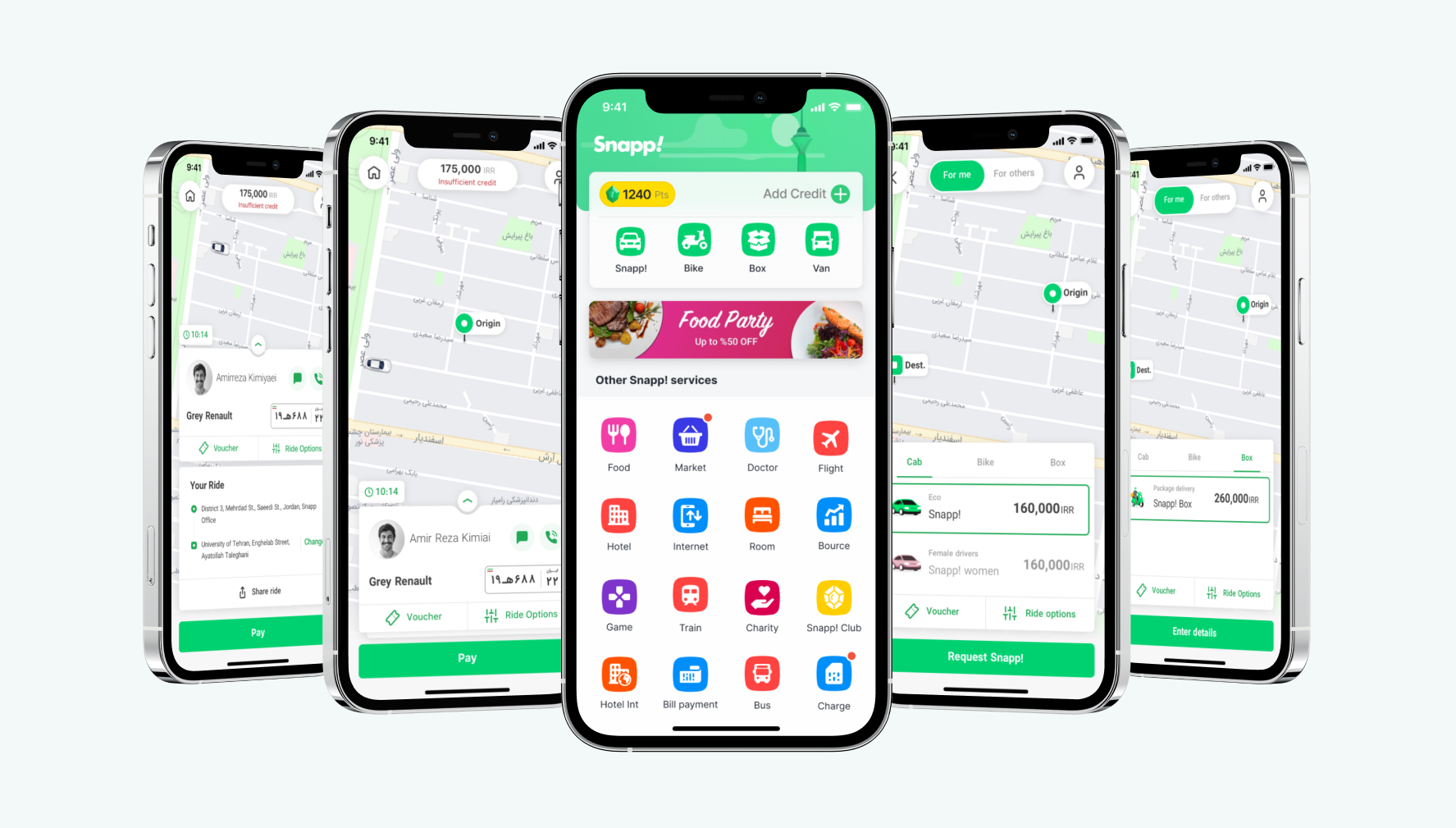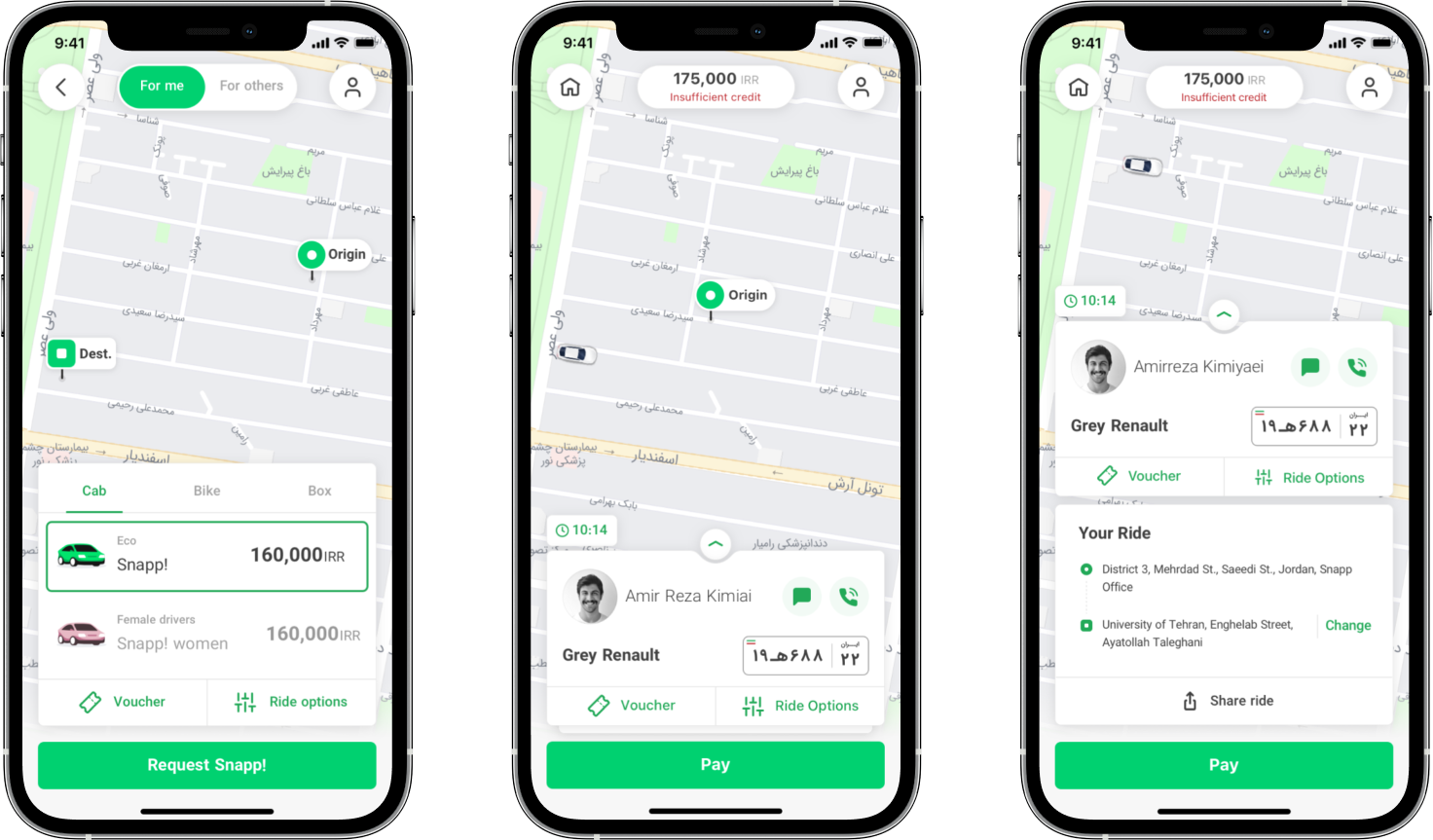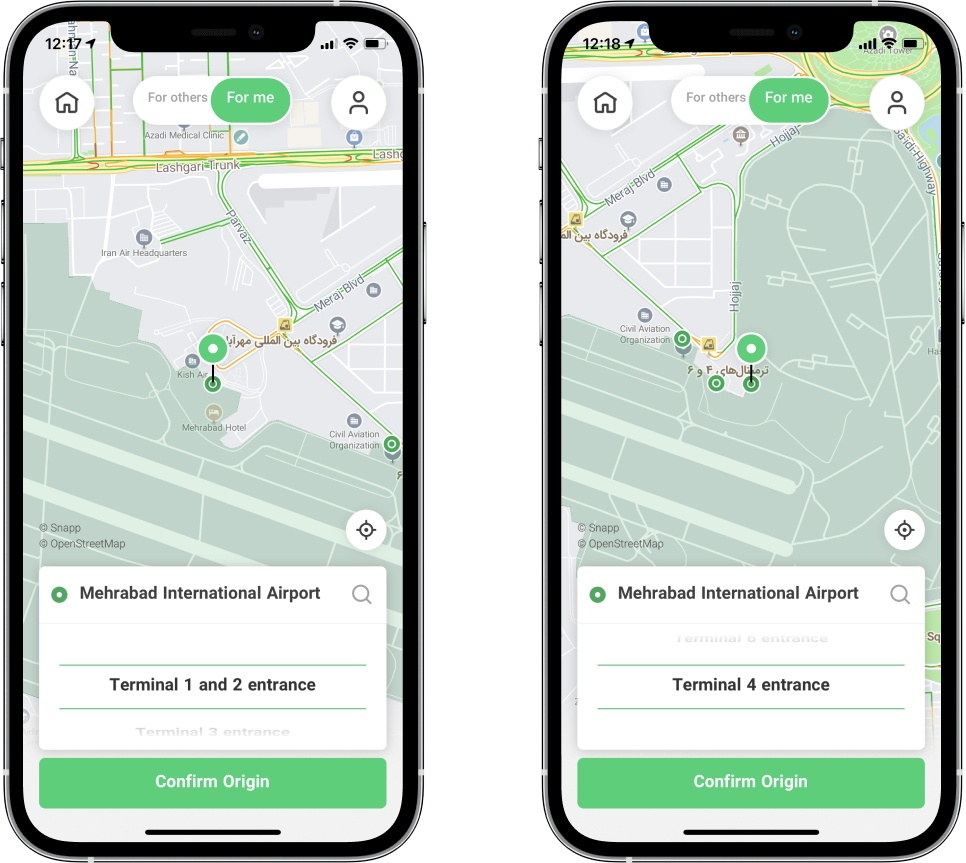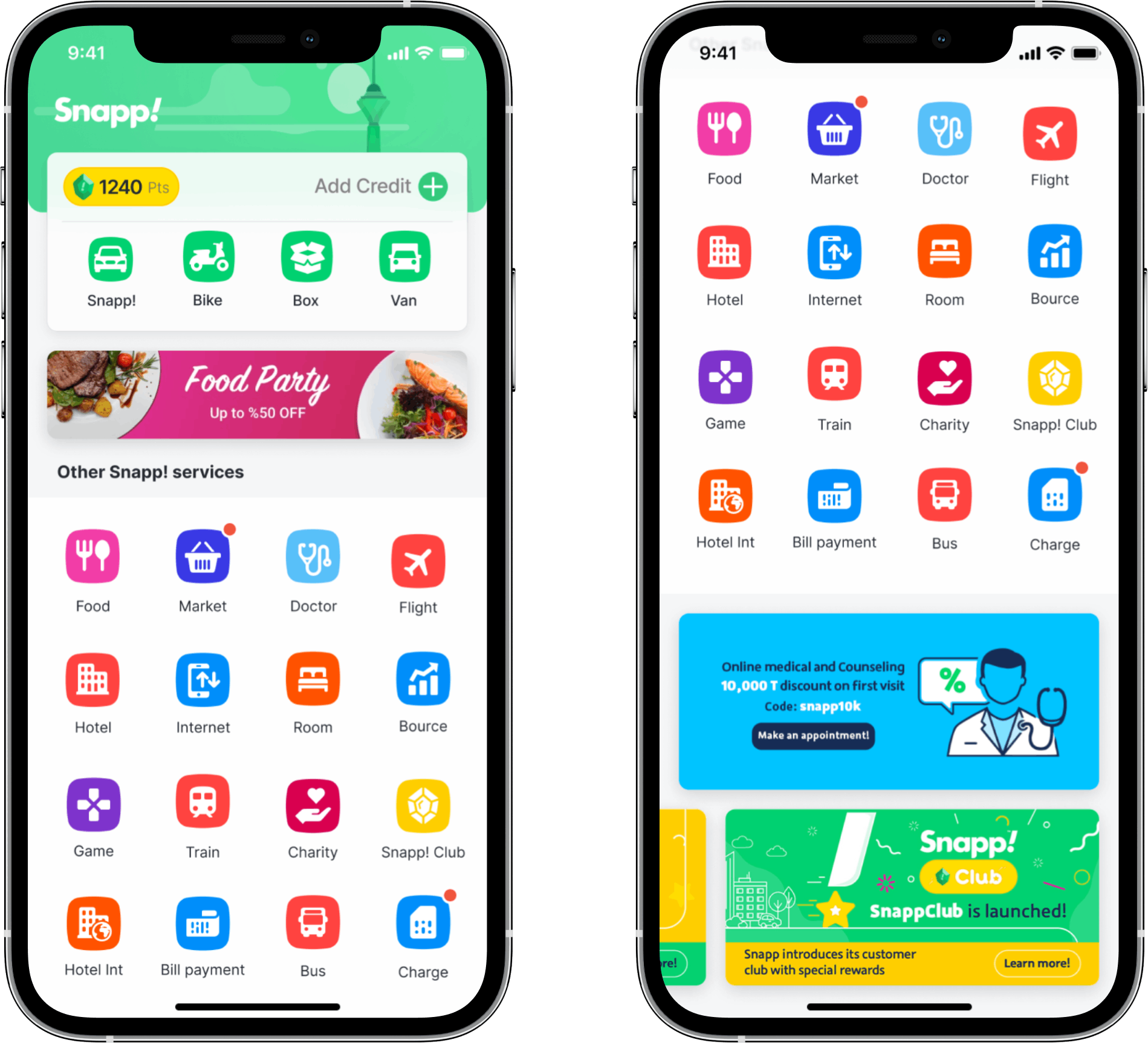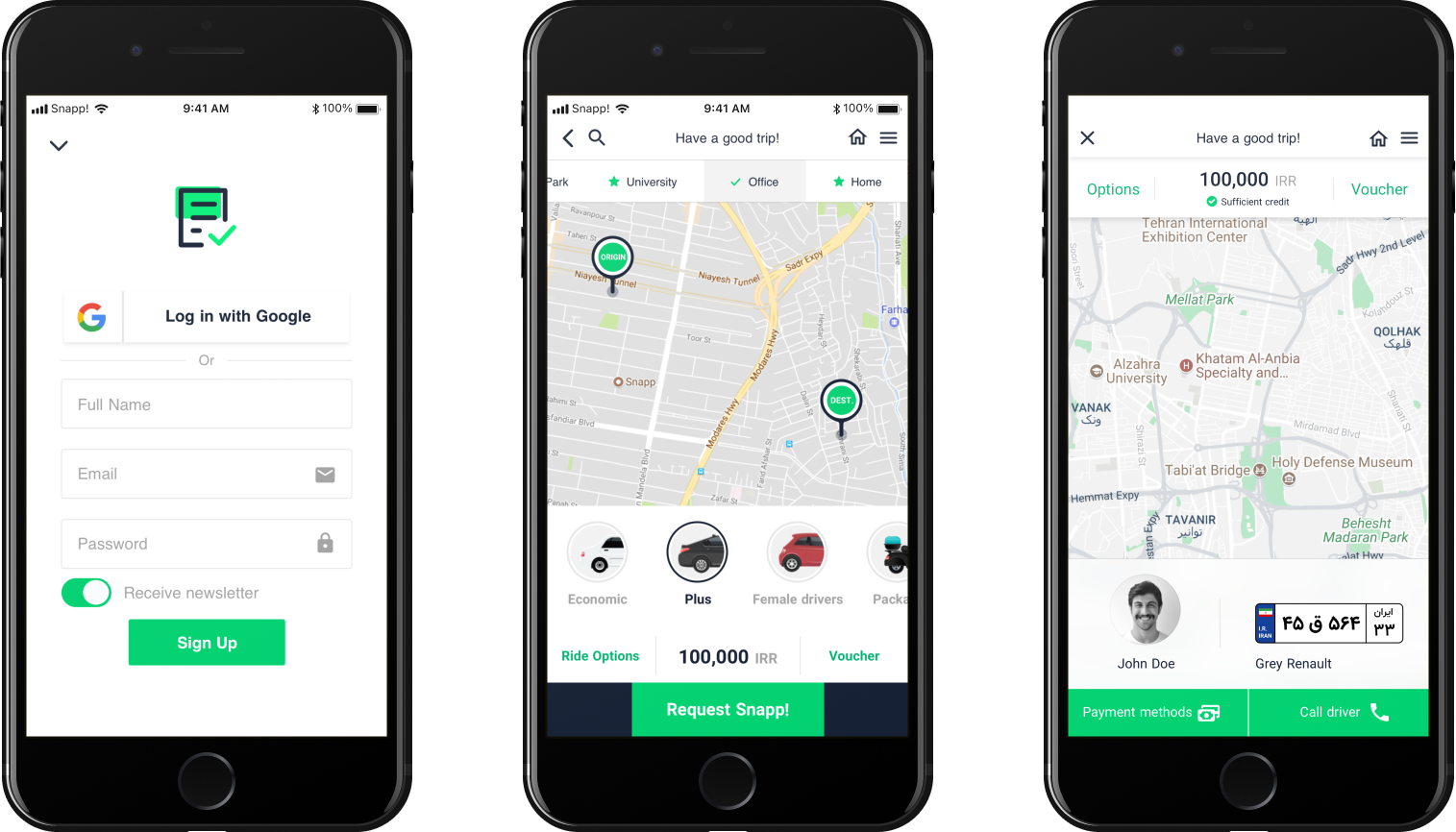Introduction
Founded in 2014 as a solution for urban journeys, it was soon rightfully dubbed as Iran’s Uber, reaching more than 1 million daily rides in 2017.
Four years later, the Snapp! application turned into a super app, and now it offers numerous services ranging from requesting cabs & trucks, ordering food, reserving hotels and flights, buying inter-city bus and plane tickets, and all other services of Snapp! Group.
The Cab service with more than 2 million daily rides is by far the most popular.
Read more in Snapp!’s 2020 annual report (in Farsi).
